How high-tech is opening up new war theatres while helping armed forces to get victory
As undisputably assessed by everybody, our world is undergoing rapid changes characterized by increasing complexity, speed, and technological advancements. While the growing connectivity and digitalization offer numerous benefits, they also bring forth new forms of threats, making our world more unpredictable and unsafe. Hence, to safeguard the security of individuals and societies in the future, it is crucial to overcome technological and intellectual boundaries. Saab's experts diligently analyze past and present military events, connecting them with global trends to extract valuable insights for the future. Their forecasts have played a pivotal role in development work for decades, significantly contributing to the preparedness of troops worldwide against tomorrow's attacks.
Follow Army Recognition on Google News at this link
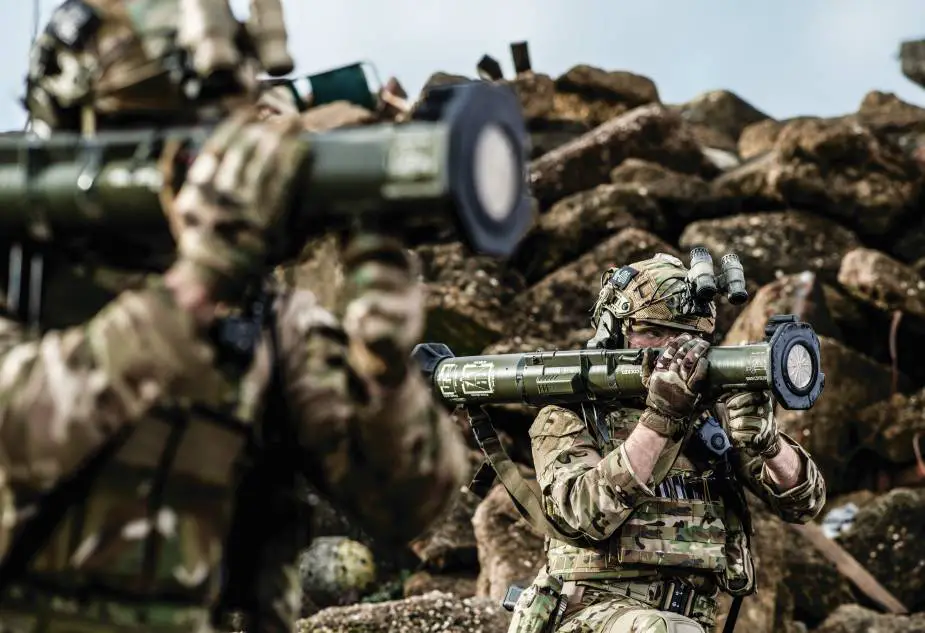
While the concrete lessons from the Ukraine war are still being learned, preliminary trends are emerging that will significantly influence future armament decisions (Picture source: Saab)
Conflicts and their theaters are becoming more diverse and unpredictable. Strategies that proved successful in the past may no longer be effective in the future. Moreover, geopolitical events like the ongoing war in Ukraine lead to rapid and extensive disruptions at political, social, and economic levels, rendering forecasts highly fragile. Today, military forces must be keenly aware of these challenges and rely on adaptable and swift partners who can provide appropriate solutions at short, medium and long terms, with sustainable support assets.
What can ground troops accomplish?
While the concrete lessons from the Ukraine war are still being learned, preliminary trends are emerging that will significantly influence future armament decisions. The ongoing conflict underscores the criticality of logistics, offers valuable insights into the capabilities of Russian troops, and emphasizes the tremendous importance of well-equipped infantry units, particularly as the duration of war extends.
Infantry combat in 2040 will be shaped by new theaters, encompassing not only land, sea, and air but also cyberspace and outer space. This multi-domain battlefield presents significant challenges for militaries in terms of protecting their personnel, populations, and national security. It is imperative to enhance the training and equipment of armed forces, considering the myriad possibilities presented by artificial intelligence, robotics, and network-oriented systems. Despite these advancements, experts agree that traditional infantry fighting remains decisive in warfare. "There will always be a war on the ground. Even with the availability and increasing prevalence of precision drone operations over long distances, soldiers will still be necessary to seize and defend territories," states Anders Wahlström, an infantry expert at Saab, the Swedish defense company. Saab's versatile weapon systems such as the Carl-Gustaf, NLAW, and the AT4 family provide militaries worldwide with a decisive edge. Through modular systems, Saab ensures the effectiveness and reliability of its products in 2040 and beyond.
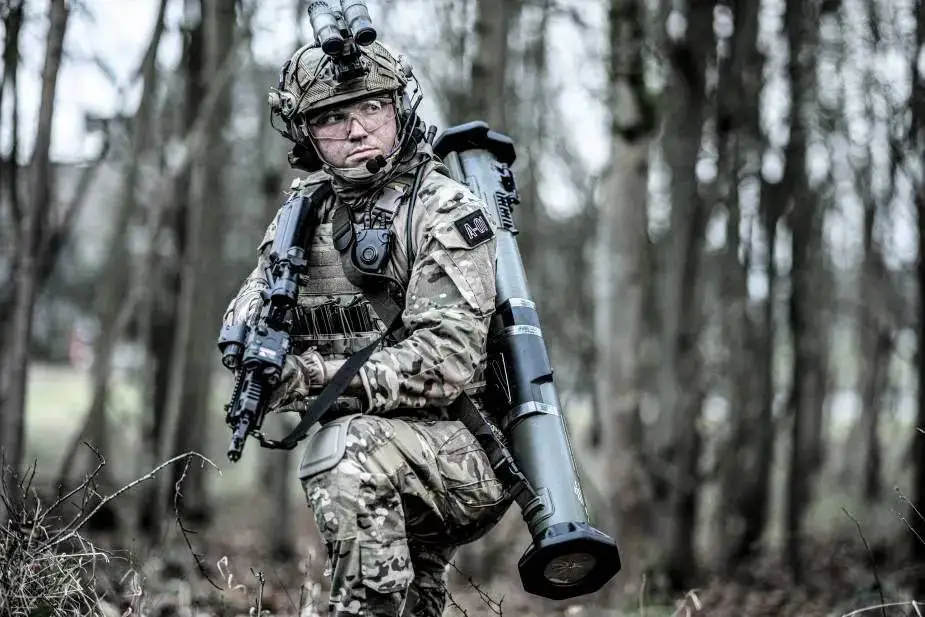
The AT4 family consists of several variants designed to engage and neutralize armored vehicles and fortified targets (Picture source: Saab)
AT4 family
The Saab AT4 family is a renowned series of lightweight, man-portable, anti-tank weapon systems that have earned a reputation for their effectiveness and versatility on the battlefield. The AT4 family consists of several variants designed to engage and neutralize armored vehicles and fortified targets.
The AT4 system was first introduced in the 1980s and has since become a widely used anti-tank weapon around the world. It offers a reliable and user-friendly solution for infantry units and special forces operating in diverse combat scenarios. One of the key advantages of the AT4 family is its lightweight design, which allows soldiers to carry and deploy the weapon with relative ease.
The AT4 features a disposable, single-shot design that can be shoulder-fired by a single operator. The launcher itself weighs around 7 kg (15 pounds), making it highly portable and suitable for both urban and rural environments. The system employs a robust recoilless mechanism that ensures accuracy and stability during firing, enhancing the operator's chances of hitting the intended target.
Over the years, the Saab AT4 family has expanded to include several specialized variants to meet various operational requirements. The AT4 CS (Confined Space) variant is designed specifically for close-quarters combat in urban areas. It features a reduced backblast signature, enabling operators to employ it effectively in confined spaces without causing excessive damage or endangering nearby personnel.
Another variant is the AT4 HEAT (High-Explosive Anti-Tank), which is optimized for engaging armored vehicles.
Additionally, Saab has developed the AT4 CS AST (Anti-Structure/breaching), which serves as an effective tool for urban warfare and counterterrorism operations. This variant can penetrate fortified structures, walls, and obstacles, providing soldiers with the ability to breach, blast and clear obstacles or neutralize fortified positions.
The AT4 family's effectiveness, reliability, and ease of use have made it a popular choice among various armed forces and security agencies worldwide. It has seen extensive deployment in numerous conflicts, including Afghanistan, Iraq, and various peacekeeping missions. The AT4's widespread adoption and its ability to adapt to different combat scenarios stand as a testament to its success and utility on the modern battlefield.

The Saab NLAW (Next-generation Light Anti-tank Weapon) is a highly advanced and versatile man-portable anti-tank missile system designed to provide infantry units with an effective anti-armor capability, the NLAW combines cutting-edge technology with simplicity of use (Picture source: Saab)
NLAW (Next-generation Light Anti-tank Weapon)
The Saab NLAW (Next-generation Light Anti-tank Weapon) is a highly advanced and versatile man-portable anti-tank missile system designed to provide infantry units with an effective anti-armor capability, the NLAW combines cutting-edge technology with simplicity of use.
The NLAW system consists of a disposable launcher and a missile. The launcher is lightweight and can be operated by a single soldier, enhancing its mobility and flexibility. It requires no special training to operate, allowing even less-experienced troops to employ it effectively. The missile itself is fire-and-forget, meaning that once launched, it autonomously tracks and engages the target without further guidance from the operator.
One of the key features of the Saab NLAW is its ability to engage both stationary and moving targets, making it highly versatile in a variety of combat scenarios.
The NLAW has a range from 20 to 800 meters, enabling it to engage targets at a safe distance. It is designed to defeat a wide range of armored vehicles, including main battle tanks, armored personnel carriers, and other high-value targets.
In addition to its anti-tank capabilities, the Saab NLAW can also be employed in an anti-structure role, making it suitable for urban combat operations. Its precision and versatility make it an excellent choice for engaging fortified positions, bunkers, or buildings, further expanding its utility on the battlefield.
The Saab NLAW has been adopted by several armed forces around the world due to its exceptional performance and reliability. Its lightweight design and ease of use make it ideal for infantry units operating in challenging environments. Whether deployed in conventional warfare or peacekeeping operations, the NLAW provides soldiers with a potent and effective tool to neutralize armored threats and enhance their combat capabilities.
With its advanced technology, simplicity of operation, and adaptability to various combat scenarios, the Saab NLAW has established itself as a highly capable anti-tank missile system, empowering infantry forces and contributing to the overall effectiveness of modern military operations.
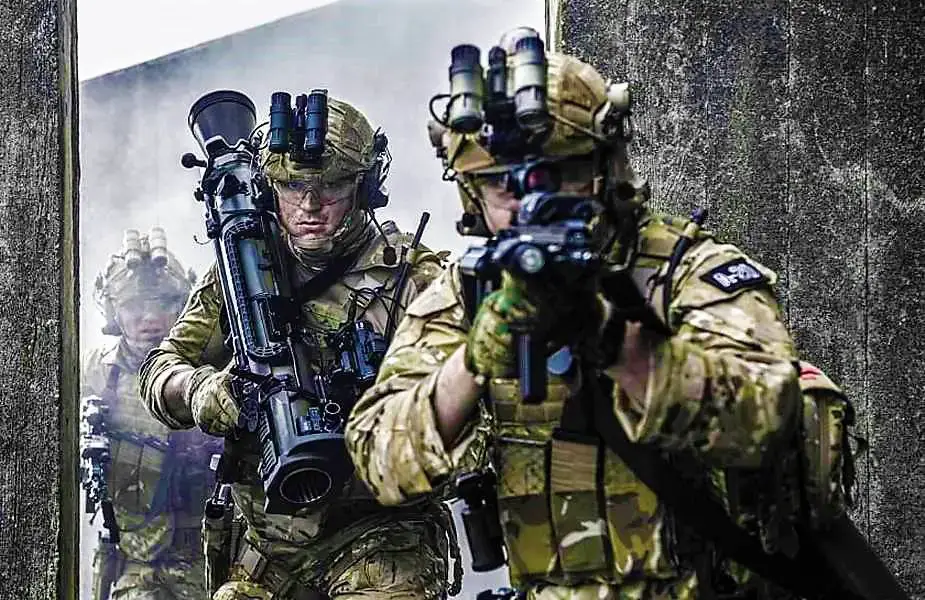
The wide range of ammunition types available for Carl-Gustaf makes it flexible and able to handle any situation on the battlefield (Picture source: Saab)
Carl-Gustaf
The Saab Carl-Gustaf system has earned a prominent place in modern military arsenals. This versatile and highly effective missile stands as a testament to Swedish engineering and innovation in the defense industry.
Designed to engage and neutralize armored vehicles, bunkers, and fortified positions, this weapon system delivers devastating firepower with pinpoint accuracy. Its advanced technology and robust construction ensure a high level of effectiveness and reliability.
One of the key features of the Saab Carl-Gustaf missile is its adaptability. With its modular design and wide range of ammunition options, it can be customized to meet specific mission requirements. This flexibility allows military forces to utilize the missile in various combat scenarios, including urban warfare, counterinsurgency operations, and defensive maneuvers. Whether engaging enemy tanks, fortifications, or even helicopters, the Carl-Gustaf missile provides a versatile and lethal solution.
Furthermore, the Carl-Gustaf missile's ease of use and reliability make it a popular choice among military personnel. Its ergonomic design, lightweight construction, and a user-friendly interface allow operators to quickly and effectively employ the weapon in demanding combat situations. The missile's quick reload capability further enhances its operational efficiency, ensuring sustained firepower on the battlefield.
Safety is also a priority in the design of the Carl-Gustaf system. It incorporates advanced safety mechanisms to protect operators during launch and handling. These measures help mitigate risks and ensure the well-being of the personnel utilizing this powerful weapon system.
The latest evolution, the M4, offers even greater speed and maneuverability. Compatibility with an advanced fire control system and programmable 84 mm ammunition ensures that troops can rely on their equipment.
• Weight: approx. 7 kg
• Length: < 1 m
• Sights: open sights, red dot sights, telescopic sight and advanced fire control system
• Ammunition: anti-tank, anti-structure, anti-personnel, support
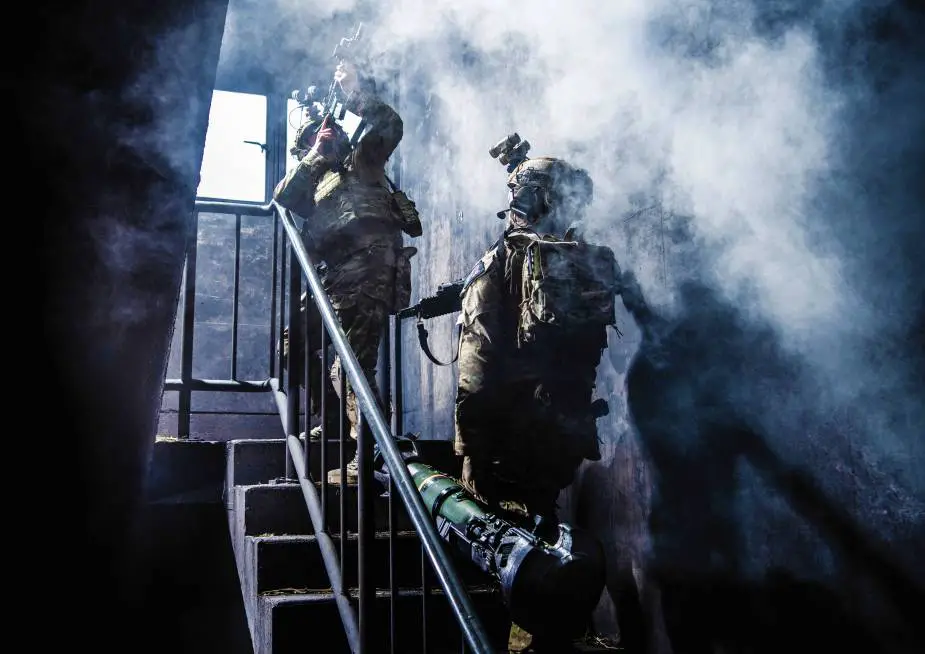
Traditional theaters of war are increasingly shifting to urban environments (Picture source: Saab)
The shift to urban warfare: cities as battlefields
The global population residing in cities continues to grow, and various factors like the climate crisis, famine, terrorism, and oppression-driven migration are contributing to new patterns of movement. As a result, traditional theaters of war are increasingly shifting to urban environments. This evolving landscape necessitates the development of weapons capable of meeting the unique demands of urban warfare. Saab's AT4 and Carl-Gustaf systems have incorporated several features specifically designed for such environments. Considerations such as short combat distances, complex terrain, firing from within buildings, and engaging targets inside structures have greatly influenced their design.
Furthermore, existing capabilities must be modernized and enhanced to remain competitive. These advancements include improved accuracy, enhanced marksmanship, and increased effectiveness while minimizing transport weight, and maintaining flexibility. However, it is crucial to ensure that the growing complexity of these weapons does not impede their ease of operation.
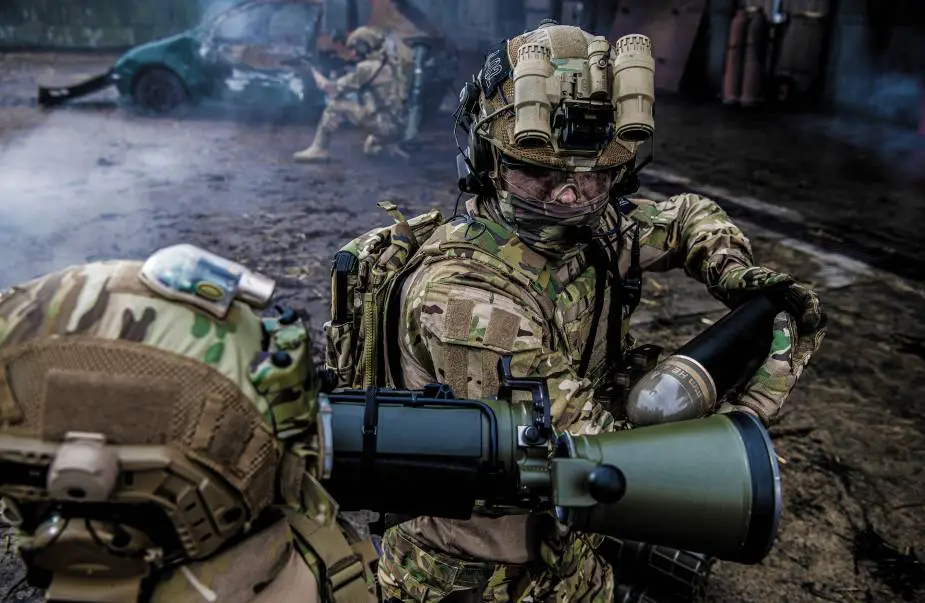
Assistant gunner loading Carl-Gustaf M4 with programmable ammo High Explosive 448 (Picture source: Saab)
Introducing HE 448, the new ammunition for Carl-Gustaf
Saab's recoilless anti-tank rifle, Carl-Gustaf, successfully combines complex requirements with exceptional tactical flexibility. With a weight of just under 7 kilograms, it significantly reduces the burden on soldiers. The new Carl-Gustaf M4 provides soldiers with a reliable weapon capable of neutralizing tanks, engaging camouflaged troops, removing obstacles, and combating enemies within buildings. The compatibility with programmable ammunition, such as the HE 448, enables even faster responses.
The HE 448 round introduces an interface within the projectile, enabling communication with the new fire control device (FCD 558). This integration allows the FCD 558 to receive accurate information on ammunition type and propellant temperature. Combining this data with the target distance input by the operator, the FCD 558 determines the optimal trajectory. As a result, preparation time is reduced, precision is enhanced, and operational effectiveness is increased. The HE 448also achieves remarkable range and fragmentation distribution, instilling soldiers with the utmost confidence in their equipment.
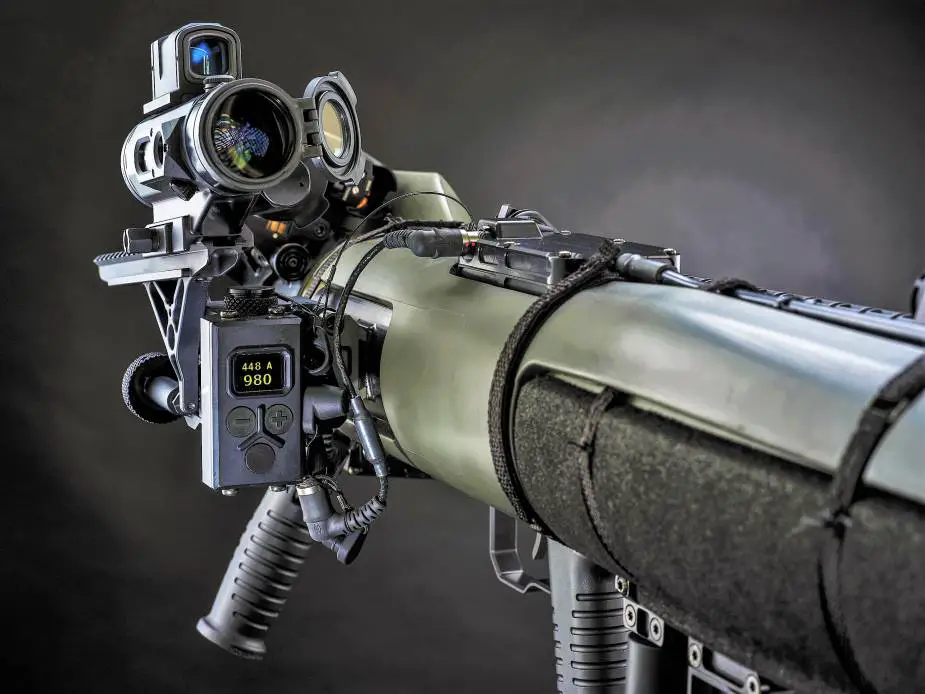
Saab FCD 558 (Picture source: Saab)
The realistic scope of autonomy
While the concept of robots marching on the battlefield or artificial intelligence engaging in near-autonomous warfare may captivate the imagination, such scenarios are likely to remain confined to the realm of cinema beyond 2040. However, robotics, AI, and Big Data offer abundant opportunities to support infantry troops. They can enhance situational awareness, facilitate enemy observation, and aid in identifying vulnerable points for attack. They play a vital role in swiftly analyzing information and adapting tactics accordingly. Additionally, partial automation enables the rapid dissemination of newly acquired intelligence to modern weapon systems, providing crucial time advantages. Communication and connectivity will significantly shape the future multi-domain battlefield.
Wahlström, a Saab expert, emphasizes that these weapons do not act autonomously. Instead, their role lies in mission pre-planning, as fully autonomous decision-making raises significant ethical questions. He expects that current regulations and framework conditions will not permit such systems in the near future, drawing parallels to licensing procedures in other domains like self-driving cars.
Studies also confirm that weapons alone are ineffective without the human factor. Machines can process information more rapidly, operate continuously without breaks, and endure harsh conditions. However, they are not yet intelligent enough to replace humans on the battlefield or effectively compete against them. Robots, although more efficient at causing harm, do not possess the capability to distinguish between civilians and combatants, a critical aspect of complying with international humanitarian law in warfare.
A versatile approach for the future
The success of Saab can be attributed to the remarkable modularity of its systems, particularly evident in its ammunition. The intelligently designed Carl-Gustaf and AT4 weapons both operate with an 84 mm caliber, allowing for the recombination and assembly of individual subsystems, such as the fuze. This modular approach enables the seamless transfer of capabilities between weapons, providing a swift response to evolving requirements and catering to the unique needs of each customer. Furthermore, it grants the military the advantage of avoiding the training of troops on new weapons, while continuing to utilize existing ammunition.
Authenticity and adaptability
The expertise and proficiency of soldiers and their weaponry remain paramount in warfare. As threats become increasingly complex, the significance of education and training amplifies. While live training with Outdoor Training (ODT) simulators and actual firearms will continue to be pivotal in soldier preparation, virtual training presents a plethora of new possibilities. It can supplant live firing exercises on a large scale for basic training, considering factors like environment, cost, and time. Additionally, at the tactical level, realistic virtual indoor training becomes crucial. Anders Wahlström explains that there will be a growing demand for realistic simulations of different weapons, replicating their actual behavior in terms of ballistic performance and handling.
Investment in advancement
For years, Saab has not only invested in developing cutting-edge weapons but has also placed significant emphasis on providing comprehensive training. Collaborations with renowned universities and research institutes contribute to the exchange of knowledge among customers and experts across various disciplines, serving as a key success factor for the defense company.
Forward-thinking vision
Anders Wahlström emphasizes the immense importance of looking into the future, particularly for a service provider like Saab. Staying one step ahead is essential in granting customers a decisive advantage on the battlefield. However, accurate predictions are contingent upon a robust foundation for analysis. Saab sets the highest standards for evaluating current events to ensure quick and flexible responses. While the specifics of the battlefield in 2040 remain uncertain, Saab's experts firmly believe that the connection between the soldier and the battlefield will remain inseparable. The infantry continues to shape the future of warfare.
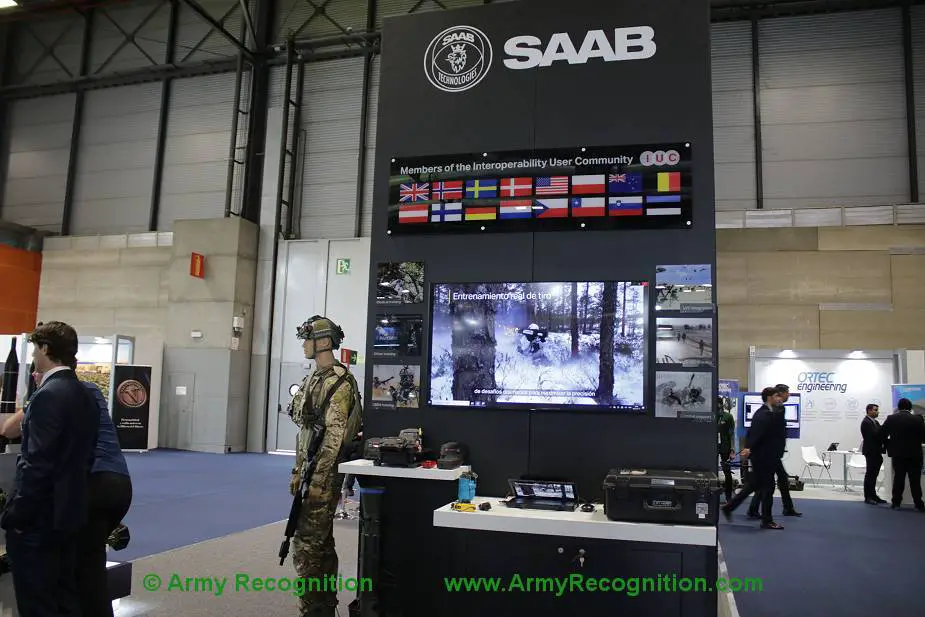
SAAB at FEINDEF2023 defense exhibition in Madrid (Picture source: Army Recognition)
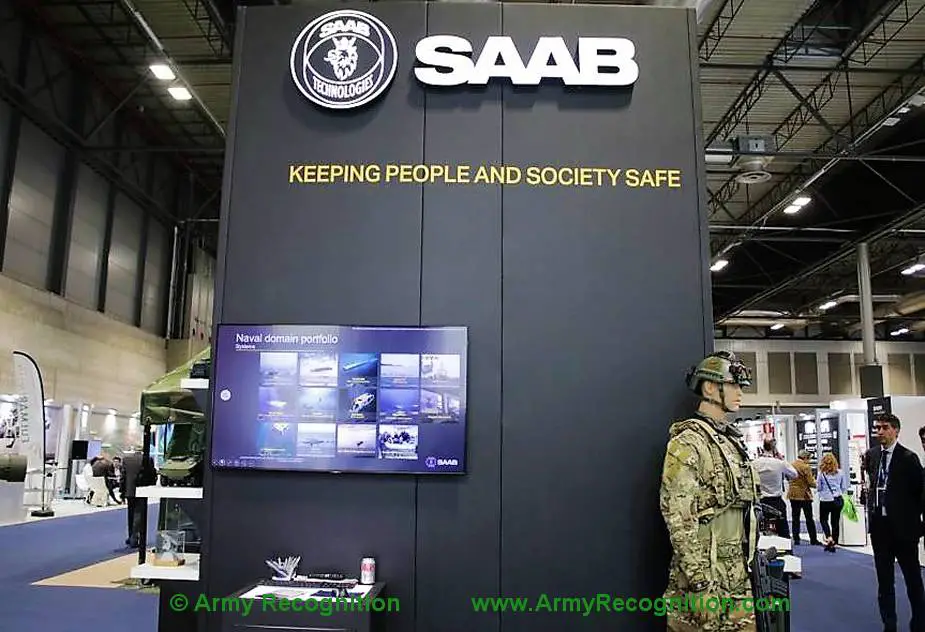
SAAB at FEINDEF2023 defense exhibition in Madrid (Picture source: Army Recognition)


























